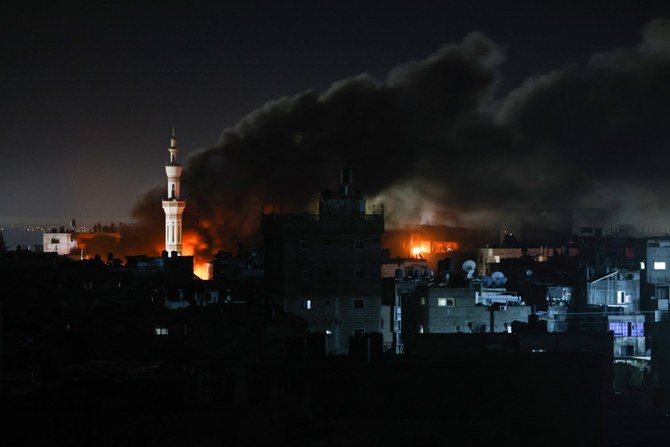
Back in 2014, a young Palestinian journalist, Yaser Murtaja, saved the life of a little girl named Bisan by pulling her out of the rubble during Israel’s assault on Gaza. She lost six members of her family, including her parents. Yaser did not stop there as he felt a responsibility to make sure she fully recovered mentally and emotionally, as well as physically. On Friday, Israeli soldiers shot Yaser and, hours later, he died.
On the other side of the border, Israeli civilians watched the killing spree from a high platform, just as Israeli residents of Sderot watched the 2014 bombing of Gaza from their sofas. Israeli attacks on Gaza, this massive open air prison, have become a spectator sport akin to the Roman Colosseum.
This sums up the situation. Israeli civilians felt safe enough to perch themselves right next to the border. They knew there was no serious threat despite official Israeli hasbara. The dehumanization of Palestinians in Gaza has reached such levels that an illegal shoot-to-kill policy is not even remotely questioned in mainstream Israeli politics.
The most chilling quote of all, worthy of Bashar Assad or Kim Jong-un, came from Israeli Defense Minister Avigdor Lieberman: “There are no innocent people in the Gaza Strip.” Hamas makes the same disgraceful comments about Israel and Israelis but, unlike Lieberman, it is sanctioned.
Lieberman’s troops understand the message. A clearly marked press vest is zero protection for a Palestinian journalist. Last week, the Israeli army tweeted that it knew “where every bullet landed,” so it could probably give a number to the bullet in Yaser’s stomach.
Yaser had recently posted on Facebook that his great dream was to be able to photograph Gaza from the air. He desperately wanted to travel, but you cannot do that when you live in Gaza. You are trapped in the 365 square kilometers of this enclave. Palestinians just want a future, an exit from this overcrowded hellhole. Even the reporting of his murder was sanitized, with AP’s headline reading that he “died after covering the mass protests along the Israel border,” as if it might have been a heart attack, a car accident or an unfortunate encounter with a bullet that was passing by.
Five other journalists were injured, according to the Palestinian Journalists’ Syndicate. Another 10 were shot on the March 30 protests. Israel says it does not shoot journalists but its record suggests otherwise. For example, in 2003 Israeli forces shot dead British cameraman James Miller in Gaza.
Two marches down, at least five more to go. At least 27 killed in the two so far, and many hundreds injured, some very seriously. The Palestinian footballer, Mohammed Khalil, will never play again after being shot in the knee. This is all exacerbated by a chronic shortage of vital medicines.
For Israel, the 11-plus years of Gaza being closed off has not brought security — its Gaza policy is a failure.
Chris Doyle
Are any lessons being learnt at all?
For Israel, the 11-plus years of Gaza being closed off has not brought security — its Gaza policy is a failure. Hamas remains in power. Israel’s use of overwhelming force where there was no immediate risk to life brings only international public opprobrium. Even if key states were pathetic in their responses, public opinion is running away from Benjamin Netanyahu et al.
Hamas appears to have adapted its tactics, with a clear desire to organize with other groups and a series of largely peaceful protests. Still, it too has no solutions to the catastrophe facing Palestinians in Gaza; no answer to the utter desperation that two million people face.
For the Palestinian Authority, which is publicly committed to non-violence and negotiations, one has to ask why it has not been organizing mass peaceful protests as part of a strategic program of national liberation. Palestinian civil society has done so in areas of the West Bank, such as at villages like Bi’ilin, which is threatened by the wall. After all, if there was any one era that saw the Palestinians move forward in the quest for rights, it was the first Intifada from 1987 to 1993, which brought their plight into living rooms across the globe.
Quite how the Palestinian leadership plans even to ease the burden of occupation is a mystery. Hamas is trying, albeit not convincingly, to park itself on what should be nationalist territory.
Excuses have not yet been invented for the vacuous responses from key international actors, which are even weaker than the usual bromides of faux outrage. The EU statement was limp and guilty of astonishing appeasement. Its invertebrate statement read: “This raises serious questions about the proportionate use of force, which must be addressed.” Watch out anyone wishing to protest in any EU state if Israel’s open-fire policy, better described as shoot-to kill, is ever adopted. Would the Donald Trump Twitter account be inactive if Mexican soldiers killed 28 Americans across the US Mexican border?
Israel has always enjoyed a culture of impunity. It was often careful not to extend this too far and to embellish its crimes with at least the veneer of pseudo legal cover. Yet snipers under no threat popping off Palestinians for the watching fans should be the bloody moment to call time on its boundless pile of get out of jail free cards.
Chris Doyle is director of the London-based Council for Arab-British Understanding (CAABU). He has worked with the council since 1993 after graduating with a first class honors degree in Arabic and Islamic Studies at Exeter University. Twitter: @Doylech









